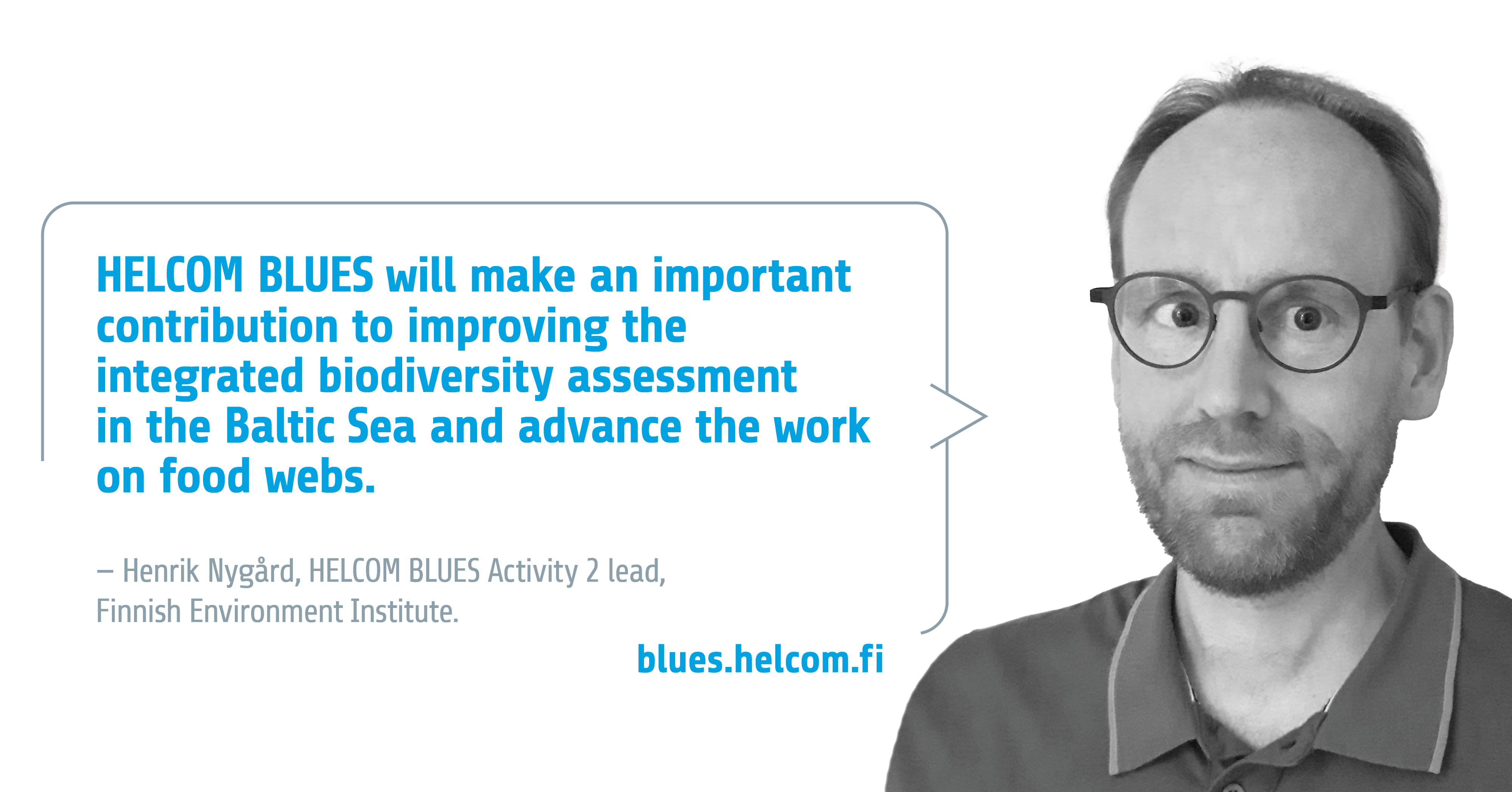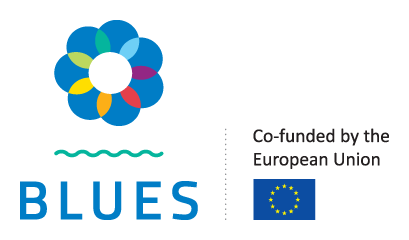
Henrik Nygård is working on HELCOM BLUES Activity 2, task 2.5, including topics related to integrated assessments of biodiversity and food webs. Henrik works as a senior research scientist at the Finnish Environment Institute with monitoring and assessment of the Baltic Sea, mainly focusing on benthic habitats.
What is your Task in HELCOM BLUES all about? What main challenges and/or pressures on the Baltic Sea does it try to solve?
Task 2.5 under Activity 2 focusses on developing the integrated biodiversity assessment tool (BEAT) for use in HOLAS 3 (the Third Holistic Assessment of the Baltic Sea). Since HOLAS II improvements and new developments of biodiversity indicators have taken place and the policy guidance on the assessment structure has also been updated. Task 2.5 has worked on implementing these changes in BEAT. Further, the task contributes to the food web assessment in HOLAS 3 with evaluations on how information from HELCOM indicators can be related to the structure and function of food webs.
What are the planned outcomes of your specific BLUES Activity/Task?
The main outcome of task 2.5 is providing a fit-for-purpose assessment tool for the integrated Baltic Sea biodiversity assessment in HOLAS 3. In practice, this means translating and combining the information from HELCOM indicators into ecosystem component specific status assessments. Secondly, the task also contributes to the topical assessment of food webs in HOLAS 3, reflecting the structure and function of food web components.
How will your BLUES Activity/Task benefit your organization in particular and the Baltic Sea in general?
By developing the methodology of the integrated biodiversity assessment, the work in HELCOM BLUES will contribute to an improved biodiversity status assessment, providing useful information for the management of the Baltic Sea. At national level, the HOLAS 3 assessment form the basis for the regional aspects to be included in the national reporting for the EU Marine Strategy Framework Directive. The assessment methodology can also be applied at national level, as the BEAT tool is available online.

